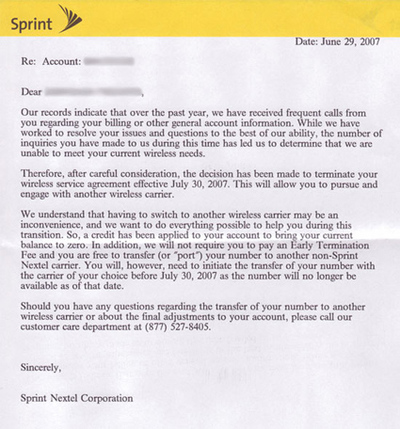Sprint recently sent 1,000 subscribers a termination notice. These were not dead-beat customers who hadn’t paid their cellphone bills. These were customers who paid their bills on-time but called the Sprint Customer Service department all-the-time.
The terminated customers called the Sprint Customer Service department an average of 25 times a month complaining about billing charges and/or technical issues. In the letter to these disposed customers, Sprint said, “The number of inquiries you have made to us … has led us to determine that we are unable to meet your current wireless needs.”
While the idea of firing customers is counter-intuitive, it’s not new. In the book ANGEL CUSTOMERS AND DEMOM CUSTOMERS (2003), authors Larry Selden & Geoffrey Colvin advocated businesses fire their least profitable customers (“demons”) so the business could better focus on satisfying their most profitable customers (“angels”).
In an online article, Geoffrey Colvin explains the rationale behind his thinking…
”In our experience across a wide range of industries, companies typically find that the best 20 percent of their customers account for 150 percent of total profits! The worst 20 percent typically lose money equal to 75 percent of profits, while the remaining 60 percent of customers account for the rest. Knowing which customers are angels and which are demons presents an enormous opportunity.Once you know the true profitability of your customers, you can figure out the reasons behind the numbers. For your unprofitable customers, you’ll have to face the reality that you’re not offering them a compelling value proposition – a way of meeting their needs so well that they’ll reward you with handsome profitability. You’ll have to devise new, better, value propositions for them, which our experience shows you can probably do. As a result, you’ll start to turn those unprofitable customers into profitable ones, which typically creates a substantial swing in the business’s overall profitability.
In the end, you may find that a small percentage of customers just cannot be made profitable. By the time you’ve figured out who they are, you’ll understand very well why they probably aren’t worth keeping.”
With over 53,000,000 subscribers, Sprint will feel no pain over losing 1,000 “demon” customers.
UPDATE …
Via Seth, by way of gadgettell, we get a look at the letter Sprint sent its “demon” customers:
